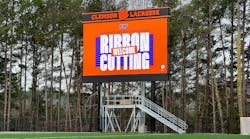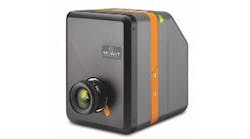Troy, NY (May 6. 2019) – Rensselaer Polytechnic Institute (RPI) today announced new lighting modules being developed at the Lighting Enabled Systems & Applications (LESA) Center in collaboration with the Greenhouse Lighting & Systems Engineering (GLASE) consortium, showing real promise for advanced control over the spectral distribution of color-mixing lights for horticulture research.
The six-wavelength modular fixture design can be “daisy-chained” to flexibly cover a wide range of growth area dimensions.
The Tunable Irradiance Growth Efficacy Research (TIGER) Light can be used to dynamically adjust spectrum and intensity in order to evoke specific physiological responses from the plants. The modules use a custom Light-emitting Diode (LED) design from Prolight Opto, in which all six wavelength LEDs are combined in a single LED package for superb color mixing at any distance from the light source.
As light is a source of both information and energy for plants, creating spectrally uniform precise ‘light algorithms’ by controlling the timing and spectral power distribution is critical for optimizing controlled environment agriculture (CEA) plant growth. The TIGER Light will help to determine how the dynamic use of specific wavelengths can augment plant growth rates and improve nutritional value while controlling other plant qualities for improved CEA outcomes.
“The TIGER Light is a powerful research tool,” says LESA Researcher Rick Neal of the work he’s perfecting with Arunas Tuzikas. “Each module can be calibrated separately and independent of the housing to be systematically and individually tuned.”
Calibration files stored on each module compensate for any LED binning variation and any issues with LED driver non-linearity, so each one has identical performance.
The LESA engineering research team has also reconfigured the physical layout of the six-color LED board assembly for integration with the CIRAS-3 Portable Photosynthesis System (PP Systems, USA) to be used as a companion tool for developing optimized plant growth recipes specifically based on the TIGER Light capabilities. By using the same Prolight Opto 6-in-1 LED package, the leaf surface is exposed to light with excellent spectral mixing during photosynthetic efficiency measurements.
Shade avoidance response triggered by the red to far-red ratio and stomatal control dictated by blue and green light are wavelength-specific light responses already well known in the plant science field. With the TIGER Light, researchers have the capacity to finely tune their lighting conditions to allow further research into light as an information source. Understanding how plants use the energy and information from light can lead to more efficient CEA crop production and higher nutritional content.
The TIGER Light platform was developed under funding from the National Science Foundation (NSF) and is now supporting development of advanced greenhouse lighting platforms as part of the GLASE consortium.
The GLASE consortium is a public-private partnership to integrate advanced energy-efficient LED lighting with improved environmental controls for more efficient and sustainable greenhouse production. The consortium is led by Cornell University’s Controlled Environment Agriculture group and LESA at Rensselaer Polytechnic Institute. The New York State Energy Research and Development Authority (NYSERDA) provided $5 million in funding to support the GLASE consortium.
Contact:
LESA Center ContactLeah Scott, MBA
Marketing and Outreach Manager
Lighting Enabled Systems & Applications
Rensselaer Polytechnic Institute
Office: (518) 276-4010
Email: [email protected]




